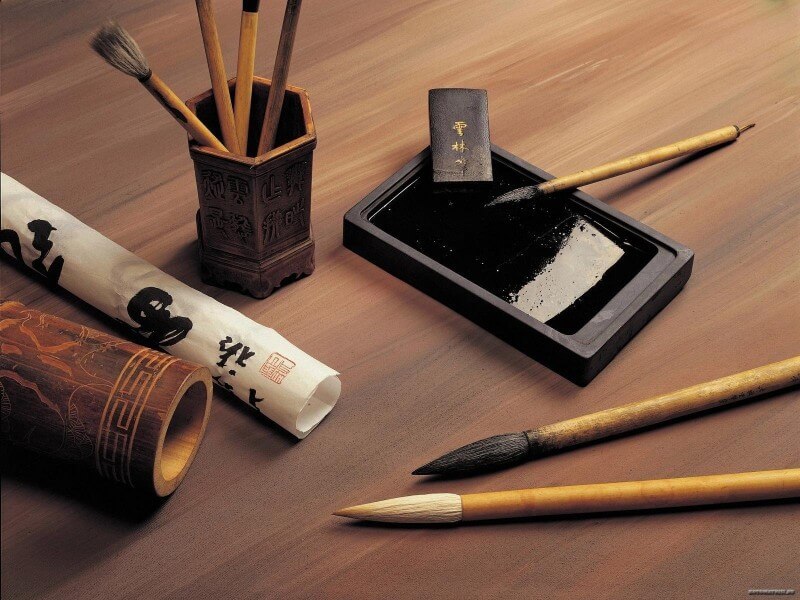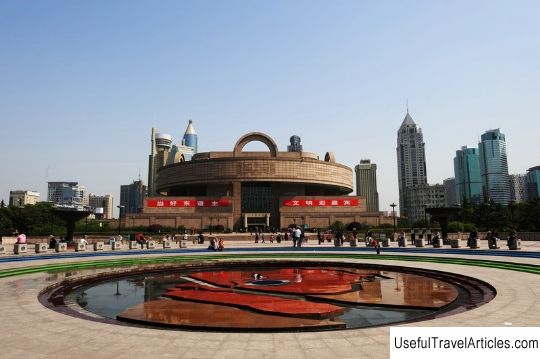Chinese Painting & Calligraphy
Rating: 7,5/10 (100 votes)   Calligrapher's kit Painting, calligraphy in China having a special originality, they are highly valued by art critics all over the world. Chinese calligraphic characters, can be written in 5 different styles. These styles are inextricably linked with the history of Chinese writing. However, the way of writing for all 5 styles is similar and has several rules of execution. Let's take a closer look at these styles: 1. Seal style. This set of rules was established during the reign of the Zhou dynasty (Zhou). Today, this style of Chinese calligraphy is used to decorate temples and castle complexes. You can meet them on different materials (wood, stone, jade or metal). Initially, the inscriptions were done only with a brush, using ink.  Learning to write in Lishu style 2. The Clerical style (Lishu) is called official. According to historians, this style was developed during the reign of the Han (Han) dynasty. I deprive it of a rather"flat" appearance. It is slightly wider and smaller than the previous version. In this style, the shape of the hieroglyphs is strikingly straightforward, but there are (few) curved strokes similar to the Seal style. Comparing these two styles, it is safe to say that Seal gravitated towards uniform width of writing, which is not the case for Clerical. Note that Lishu before the Han dynasty had a rather illegible outline of the letter, but by the middle of the emperor's reign, this situation had changed significantly. 3. The Semi-cursive (Sinshu) style is called working. This style is similar to handwriting. With traditional writing, the brush breaks off the sheet of paper much less often than in previous versions (Seal, Clerical). This makes the text less angular and rounded. That is why any educated person in China (Japan) can easily read all the characters written in this style, having only slight difficulties in reading the peculiar word forms.   "Spelling" for Chinese characters Note that when using any of the 5 writing styles, design deviations can also occur (for example, on the covers of books, posters or tapestries), the so-called simplifications of writing. Considering Chinese painting, one cannot ignore its long history of origin, traditions. Traditional Chinese painting is known as guohua (native, national). This painting includes all the same calligraphy techniques using a brush dipped in black (color) ink. Note that that oil cannot be found in Chinese (traditional) painting. As in calligraphy, paper and silk are popular materials. The finished work was attached to a Handscroll or Hanging scroll. Handscroll is a long narrow scroll for displaying scenes in Chinese (Japanese or Korean) painting, calligraphy. Handscroll presents horizontal artwork, which can be up to 25-40 cm in height and up to several meters in length. These works, as a rule, should be viewed starting from the right end. This type of scroll is designed to be viewed on a flat surface (table or wall). View episodes gradually, expanding the scroll, as if traveling.  An example of a picture using the Gongbi method · Shui-Mo Hua (Guohua) - painting with a watercolor brush. Also, this technique is called the painting of writers. This art form has been practiced by the masters since the Song Dynasty. Landscape painting was regarded as the highest form of Chinese painting. Note that the time interval lasting 5 dynasties from 907 to 1127, it was known as the great era of the Chinese landscape. In the north of the country, great artists such as Jing Hao, Li Cheng, Fan Kuan, and Guo Xi painted high mountains using only thin, black lines and precise , dash strokes.  Watercolor painting in Guohua style black lines and sharp, dashed strokes.  We also recommend reading Where to relax in the USA? Topic: Chinese Painting & Calligraphy. |




